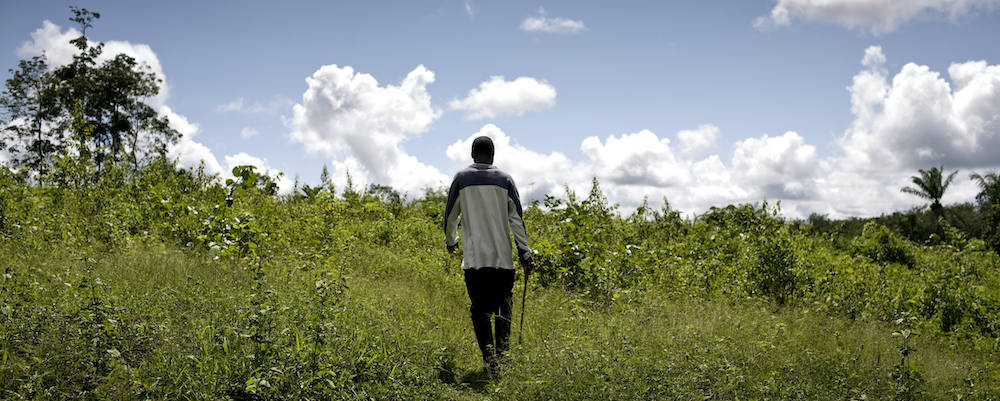From Evidence to Impact: Reflections on IPA's Best Bets Initiative

The global development sector has witnessed an encouraging surge in evidence generation over the past decade. With more than 12,000 impact evaluations conducted in the last 20+ years, we now know more than ever what works and doesn’t work in the fight against poverty. And yet, we are only scratching the surface of the transformational potential of the use of evidence in development policies and programs. In spite of the significant increase in the global body of evidence, relatively few evidence-based programs operate at scale. For evidence to have a wide-reaching and sustainable impact on the lives of people living in poverty, we need to expand our scope from evidence generation and increase our focus on making an impact at scale.
What it takes for interventions to scale
Our experience with interventions that have achieved scale reveals several key insights. Take Teaching at the Right Level (TaRL), also known as Differentiated Learning, one of the few evidence-based programs that has achieved significant scale. While the initial evidence of TaRL's effectiveness emerged from India nearly 25 years ago, it took two decades of iterative research, adaptation, and implementation support before reaching substantial scale in India. It is now being implemented in over 15 countries in sub-Saharan Africa. In Ghana, following ten years of iterative testing and adaptation with IPA’s technical support, Differentiated Learning now operates in about half of Ghana's schools—over 10,000—reaching more than 1.8 million children. We refer to these approaches which are well-known and already operating at scale across different contexts as Established Innovations.
Three critical lessons emerge from this journey. First, evidence alone is not enough. While strong evidence is crucial, successful scaling requires addressing implementation challenges, building partnerships with at-scale implementers like governments and non-governmental organizations, and securing sustainable funding mechanisms. Second, adaptation is essential—programs often need multiple iterations to work effectively within government systems, and initial evidence-backed models typically require simplification to operate at scale. Third, time and persistence matter; meaningful scale often takes 10-20 years of sustained effort and requires long-term commitment from implementing organizations and funders.
The “missing middle” in the path to scale
The hard work required to transform a successful proof-of-concept innovation into an evidence-based program with a clear delivery model capable of operating at scale seems to fall into a “missing middle.” On one side of the spectrum, incentives, particularly academic ones, are strong to conduct proof-of-concept evaluations, often using Randomized Controlled Trials (RCTs), that can demonstrate the success of potential new solutions. On the other end of the spectrum, Established Innovations draw the attention of decision-makers (governments, other large implementers, and funders), who are interested in investing in mature interventions that can deliver positive outcomes at scale in a cost-effective way. To expand the number of solutions available to decision-makers for impact at scale, we need to start investing today in the Established Innovations of tomorrow.
This is the motivation behind the launch last year of the report "Best Bets: Emerging Opportunities for Impact at Scale.” Best Bets are 14 interventions, identified by our experts and advisors, that hold great potential to solve key challenges, in terms of size and strength of the evidence, as well as other scalability factors, such as cost and easiness to implement, but that still require more evidence and/or partnerships to work at a large scale. They sit in the “missing middle” along the path to scale, where we think concerted effort from the global development community is needed to consolidate the evidence further; improve and simplify the intervention for at-scale implementers, and ultimately transform these promising innovations into the next generation of evidence-based programs that can be delivered cost-effectively at scale to impact millions of people.
A year after the launch, we're seeing exciting progress across our Best Bets portfolio driven by strong coalitions of researchers, implementers, and funders. Cognitive Behavioral Therapy (CBT) will be scaling up in Liberia and is also being adapted and piloted in Nigeria. This follows impressive 10-year follow-up results showing that a short-term CBT program paired with cash transfers reduced criminality and other destructive behaviors. Similarly, Small-Quantity Lipid-Based Nutrient Supplements (SQ-LNS)—ready-to-eat nutritional packets that improve child growth— have shown strong potential for nationwide impact in Zambia. IPA is now working with the Ministry of Health to define a government-led delivery model for SQ-LNS at scale. Social signaling for childhood immunization demonstrates similar promising progress in Sierra Leone, where IPA is building a government-led scaling pathway while optimizing the operational model. This initiative has attracted interest from Liberia and other countries to support rollout efforts for the malaria vaccine opening exciting opportunities to further test and refine this innovation for impact at scale.
Looking forward
As we continue our work on Best Bets, we remain committed to building the coalitions necessary to help more evidence-based solutions achieve their full potential for impact. Success requires a coordinated effort from three key groups:
- Funders must invest in resolving remaining research questions and supporting successful scaling efforts.
- Researchers need to address questions specifically relevant to partners implementing programs at scale.
- Implementers play a crucial role by applying these Best Bets to tackle global issues effectively while participating in research to strengthen the intervention.
The challenge ahead is substantial, but so too is the opportunity to transform how we move from evidence to large-scale positive change in the lives of people living in poverty.












